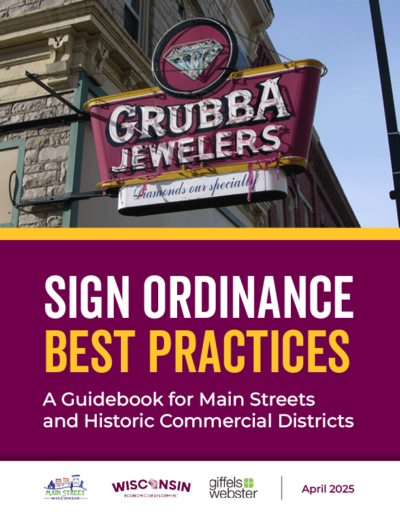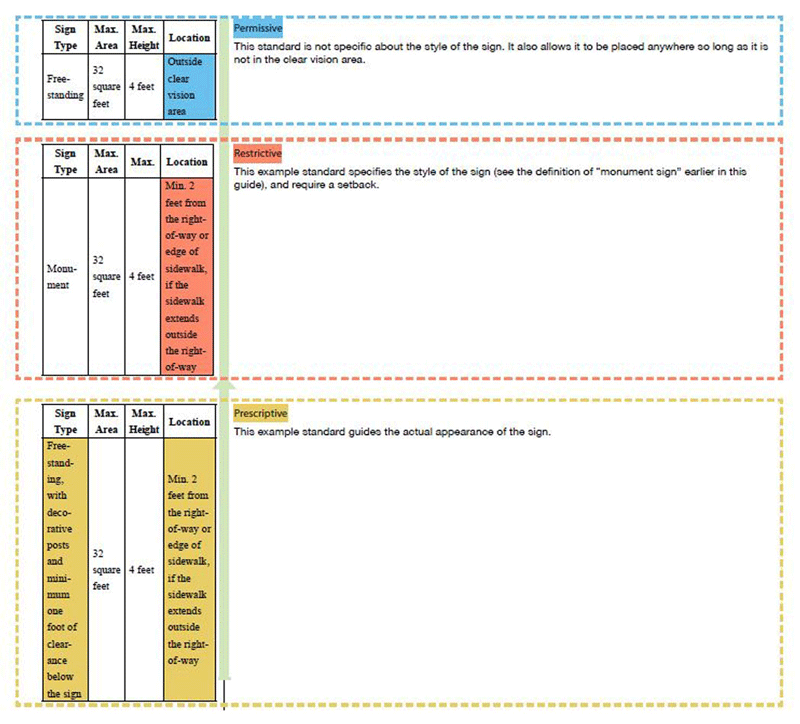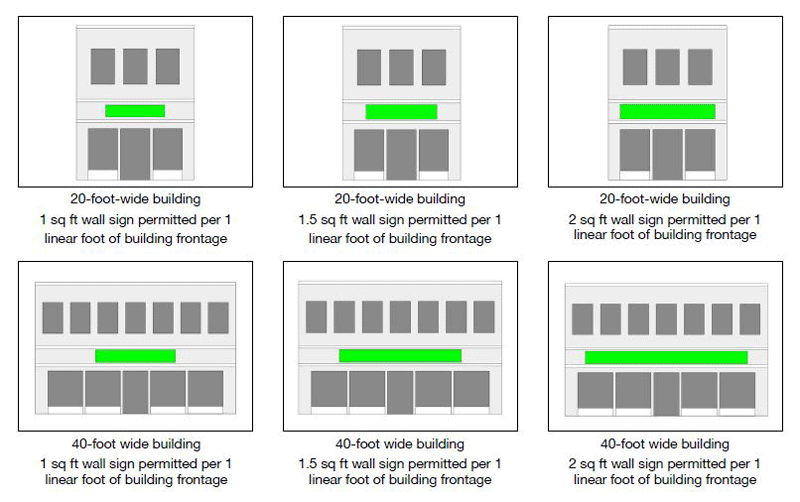 By Joe Lawniczak, Downtown Design Specialist, Wisconsin Main Street Program
By Joe Lawniczak, Downtown Design Specialist, Wisconsin Main Street Program
Business signs in historic commercial districts reflect the quantity and quality of the businesses within them, contributing to a sense of place and helping customers navigate the district. Well-designed signs appropriately scaled to buildings reflect the character of each business and can portray an image of a unified and inviting commercial district. Conversely, inconsistent or poorly designed signs can make an entire district visually unappealing and uninviting, ultimately limiting the ability of businesses to thrive.
Over the past few years, we have seen, heard about, and experienced difficulties in many of our communities related to local sign ordinances. In some cases, these ordinances are too vague and open to too much interpretation. In others, they are so restrictive that they dictate colors, excessively limit the number of signs allowed, or even infringe on property owners’ constitutional rights. Many communities lack consistent enforcement, a predictable design review process, and/or the capacity or political will for enforcement.
With these concerns in mind, WEDC and Wisconsin Main Street have hired a consultant (Giffels Webster) to create a template-style guidebook to provide guidance and clarity. The guidebook touches on all aspects of local sign ordinances, including design, size, type, quantity, placement, enforcement, and implementation. It is also designed to reflect current legal requirements regarding content regulation. Each section has up to three options a community can choose from—ranging from permissive to restrictive and prescriptive—along with helpful tips, suggestions, and verbiage communities can use to amend or create their local ordinances.
Guidebook highlights
Perhaps the most significant feature of this manual is the focus on local choice. Each segment provides communities with multiple levels of regulation to choose from for various sign types, sizes, quantities, placement, lighting, enforcement, and more. For each option, the guidebook explains each option’s pros and cons, as well as possible verbiage, consequences, and outcomes. These three options are:
Permissive Regulations
These regulations are designed to allow applicant discretion regarding the time, place, and manner of their sign usage. Permissive regulations typically require the least enforcement action over time, but they could also negatively impact consistency and cohesiveness in terms of district-wide appearance, aesthetics, size, placement, quantity, and even safety.
Restrictive Regulations
These regulations provide much more municipality-level control over the standard in question. Restrictive regulations generally require more enforcement resources than permissive ones but will typically result in a more consistent and cohesive appearance in district-wide signage.
Prescriptive Regulations
These regulations seek to implement a specific vision for signage within a community or area. They may be most appropriate in historic areas—which may have an existing distinctive appearance—but can also be used in other contexts, such as when a master plan calls for a specific appearance. Prescriptive regulations require the most enforcement and necessitate internal capacity for review, but they often help to give a particular area a unique sense of place.

Example of three options for a particular section or sign type that municipalities can choose from
Sign ordinances tend to be dated and wordy, and are often written in coded language with hard-to-read graphs, making it difficult for businesses and property owners to understand what is being asked of them. This guidebook on sign ordinance best practices looks to solve this problem and be your municipality’s next valuable resource. The sections on sign measurements and district-permitted signs are broken down into several sign types, providing a straightforward way for municipalities to approach and determine appropriate regulations for each. The custom illustrations in these two sections are designed to enhance applicant understanding. These illustrations can be used, copyright-free, by municipalities as needed.

Example of custom illustrations that help users visualize what the ordinance language says
The purpose and intent section of most ordinances is often overlooked as people skim past it to focus on the sections that address their needs. But for any municipality or review/appeals committee, this essential section justifies why certain sign regulations are adopted and enforced. Communities must take care to make sure the purpose and intent are reasonable, logical, and clear from the start. This guidebook does a great job of providing verbiage for all three options.
Also, remember that constitutionality is an important factor for signage of any type. Recent court rulings have made it even more critical that municipalities incorporate the most up-to-date legal requirements within their ordinances. WEDC, Wisconsin Main Street, and Giffels Webster have partnered with the Wisconsin League of Municipalities to review this guidebook and ensure it aligns with all current court rulings associated with signage in commercial districts.
Finally, this manual addresses in detail the importance of consistent enforcement. An ordinance means nothing if it is not adopted and embraced by the municipality. This guidebook provides extensive best practices for local review, permitting, appeals, and enforcement processes.
Using this guidebook
Once this manual is released for public use (soon after the webinar), any municipality may use it when reviewing, revising, or creating their sign ordinance. The verbiage, illustrations, graphs, photos, and information can be used copyright-free.
For designated Wisconsin Main Street communities, our downtown design specialist is willing to work with your organization and/or municipality to review your existing sign ordinance and recommend changes that will help you achieve your district signage goals. This service will be available upon request, schedule permitting.
We hope you take advantage of this new guidebook. We invested the time and resources to customize it for Wisconsin, giving our local communities and our state a step above a standard resource. We look forward to sharing it with you as soon as it’s available.
